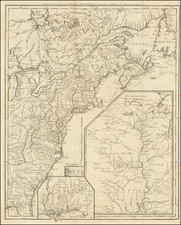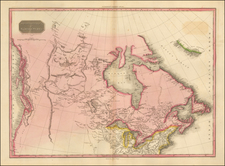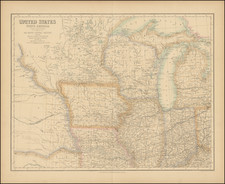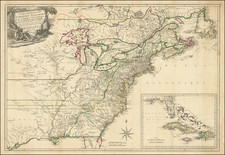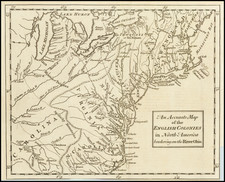Cowperthwait's map of the Organized Counties is the earliest commercially printed map of Minnesota Territory, preceded only by Pope's map of 1849.
This map was issued the year after Minnesota became a Territory. Based largely upon the maps of Joseph N. Nicollet and John Pope, the map includes a number of annotations on early exploration and topopgraphy and records the populations of the larger settled areas, including the original Twin Cities: St. Paul and St. Anthony. Minneapolis, which later sprung up across the river from St. Anthony, is not located. The map extends east the Mississippi River and north to MIlle Lacs (Spirit Lake). Fort Gaines (Ripley) is shown, with one company of dragoons and one infantry company, with a "Military Reserve on the eats side of the river. The Red River Trail is shown, following the Mississippi, then crossing at Sauk Rapids and again above the confluence of the the Crow Wing or Kagiwigwan River. Ojibwe villages and trading posts are shown.
Along the St. Croix River, a number of Mills are noted, along with the number of saws and inhabitants, where applicable, including Willow River, Stillwater, Marine Mills, Osceola and Falls of St. Croix, which is noted as being the "Head of Steamboat Navigation."
On the upper Mississippi, at Morrison's the river meets a trail listed as "Route of the Red River Traders." downriver at Little Falls, a mill with 2 saws, Shingle and lathee Machine is noted. Just to the south is Aitkins Ferry, which includes a note regarding a Trading Post and Hotel. The Road From ST. Paul to Pembina is also shown, converging with the river at Sauk Rapids, which also notes in proximity Rice's Trading Post, Olmstead's Trading Post and Gilman's Ferry
The inset map is one of the first printed maps of the full territory. As noted by Lanegran,
the map shows "a transition in the language of Minnesota's place-names from the Europeanized Dakota and Ojibwe and French names to English. The name "Mille Lacs or Spirit Lake" appears on the main map, but on the insetmap of Minnesota Territory it has been simplified to Mille Lacs. Names of the Mississippi tributaries in southeatern Minnesota are intriguing. Nearer to St. Paul, they are in English (Vermillion and Cannon), but the mre distant Zumbro River is still the Wazi Oju, and the Whitewater River is Miniskah. The Root River has two names, the Hokah or Root.
"This fascinating large scale map of part of Minnesota Territory was probably based on P.S. Morawski's much smaller scale Map of the Territory of Minnesota... published as a public document in the report of Capt. John Pope's expedition (31st. Cong. 1st. Sess. Sen Ex. Doc. 42)" - Streeter.
The map is of the utmost rarity. In Reese's Streeter Sale Revisited (1993), Reese noted only 2 locations in OCLC (we note 3 as of 2013). Americana Exchange notes only 2 copies offered for sale in the 20th Century (Streeter 1967 (purchased at Park-Bernet in 1941) and Eberstadt 1956).









